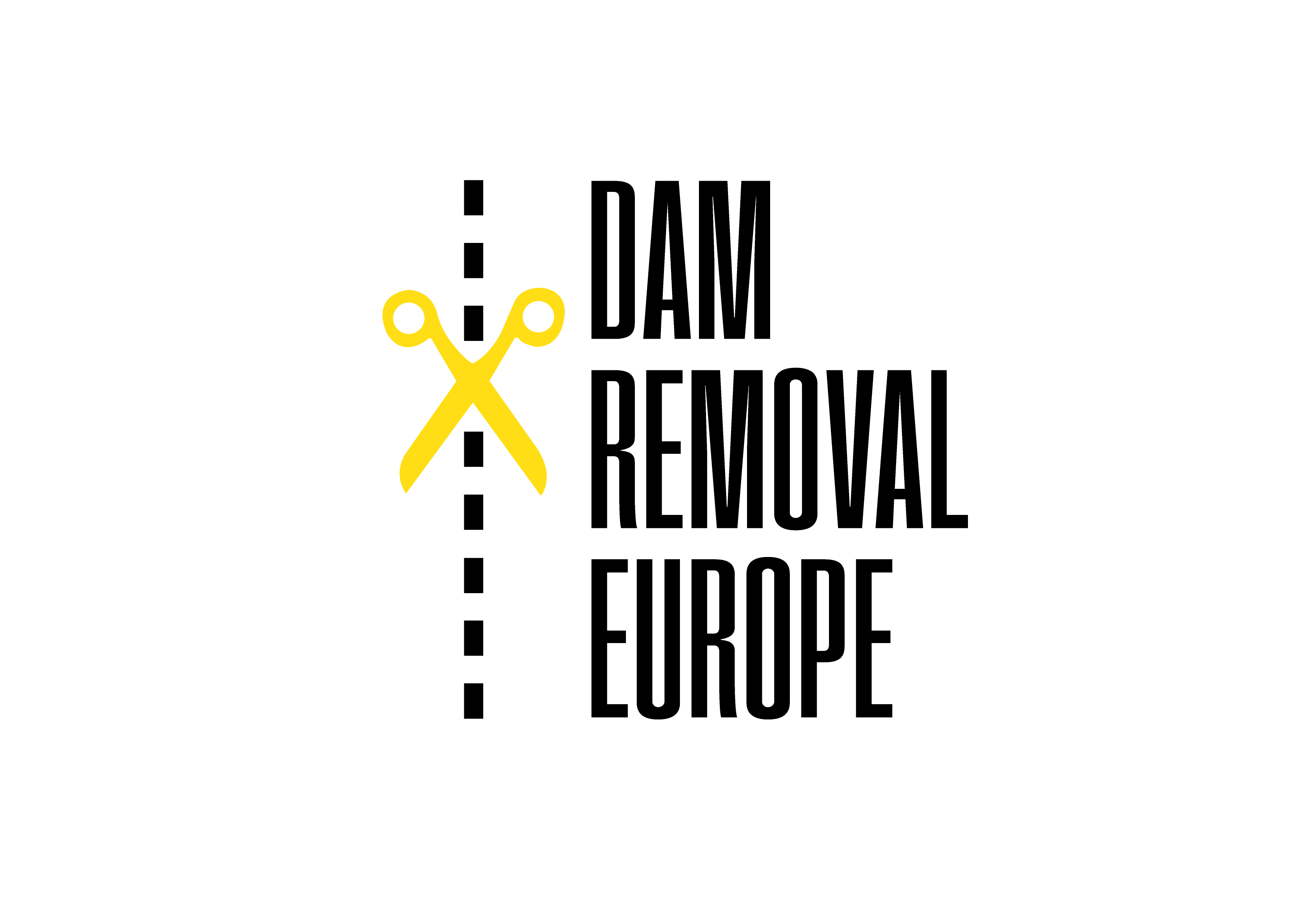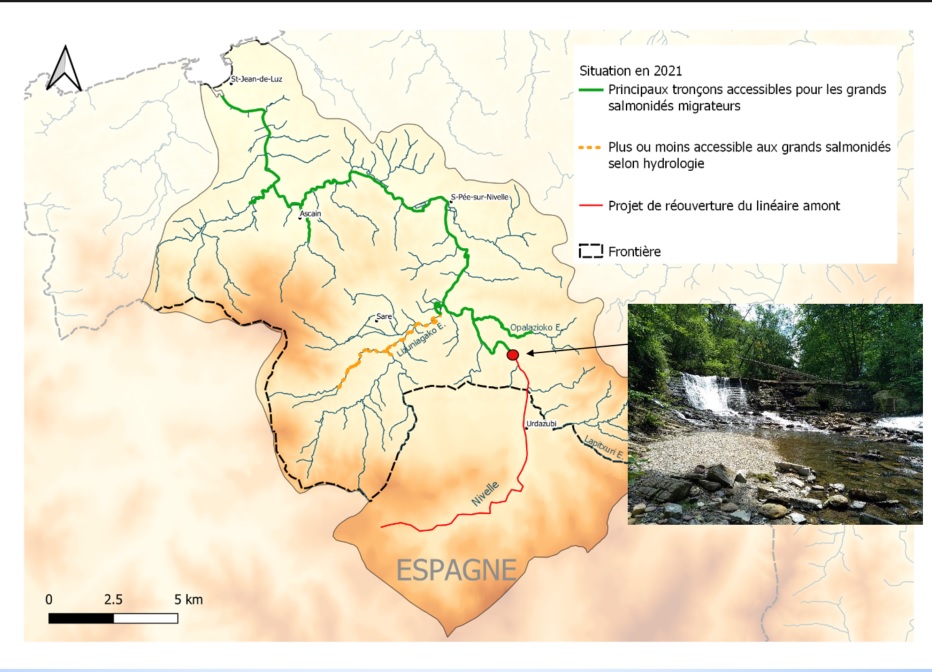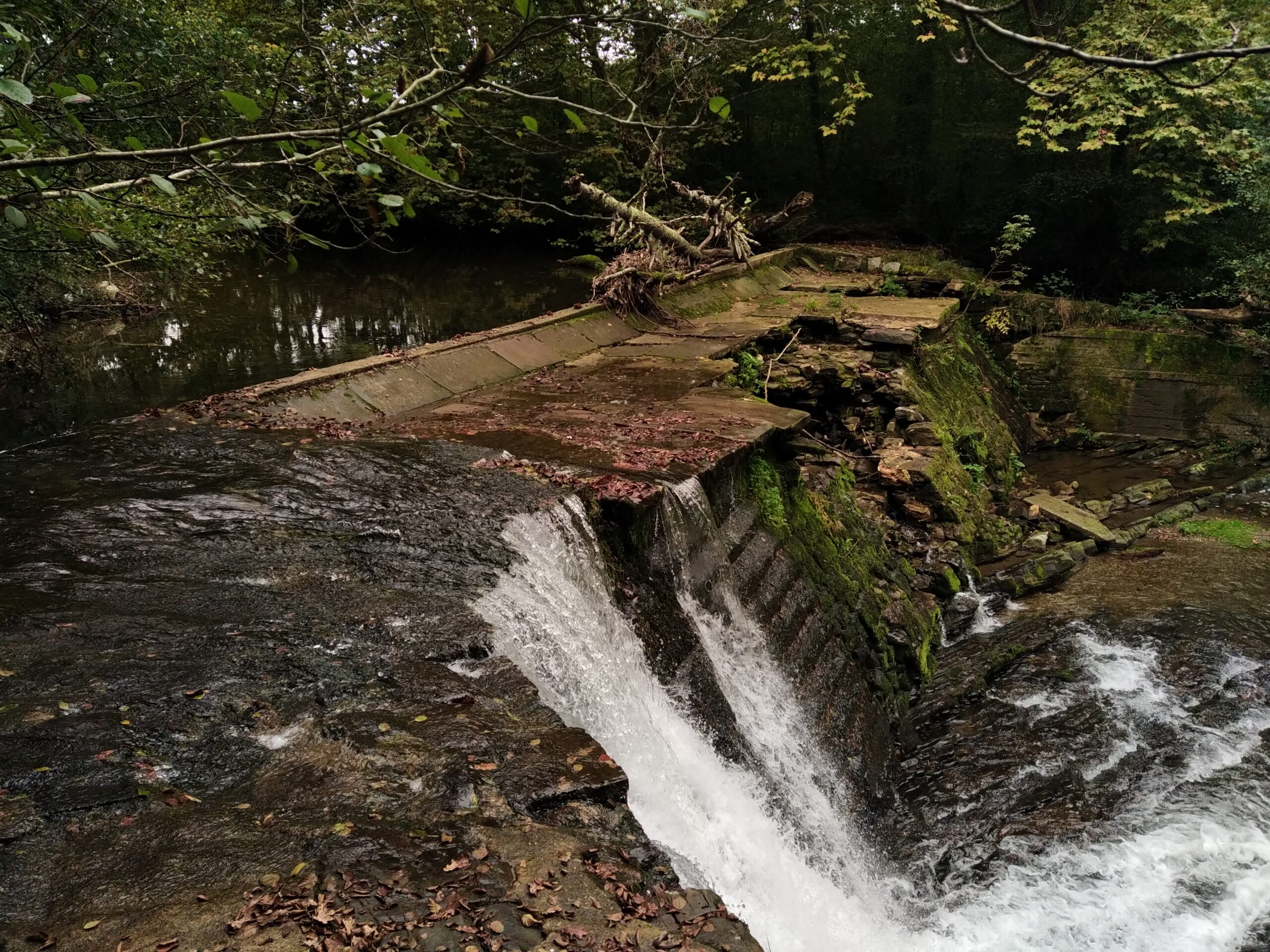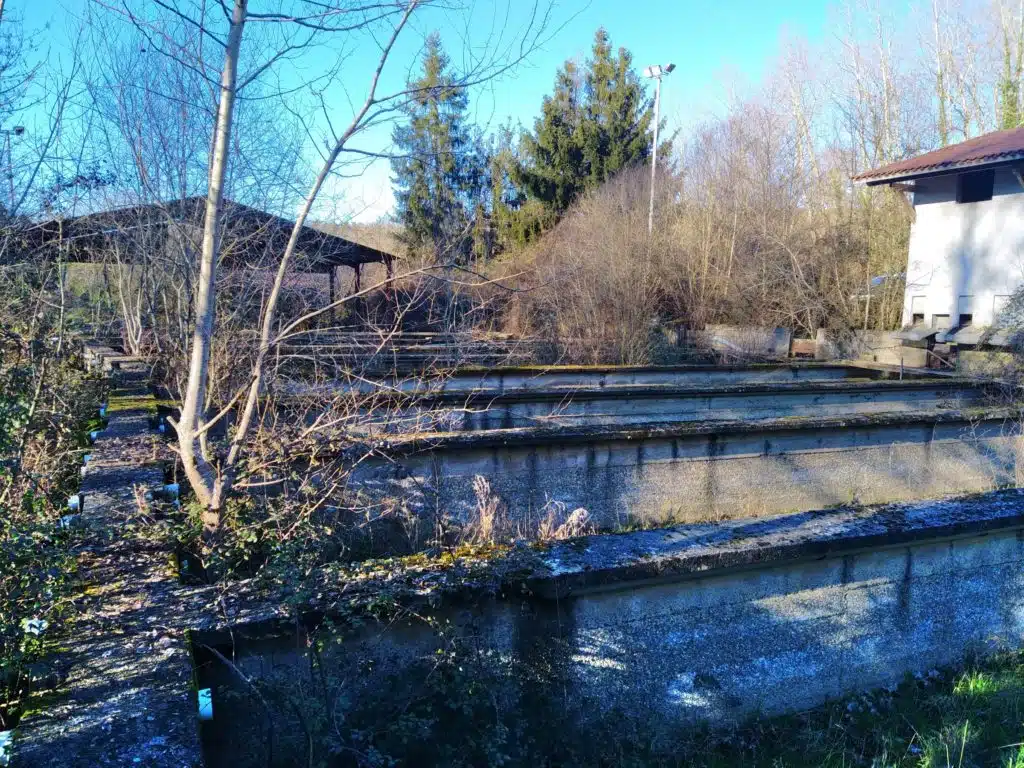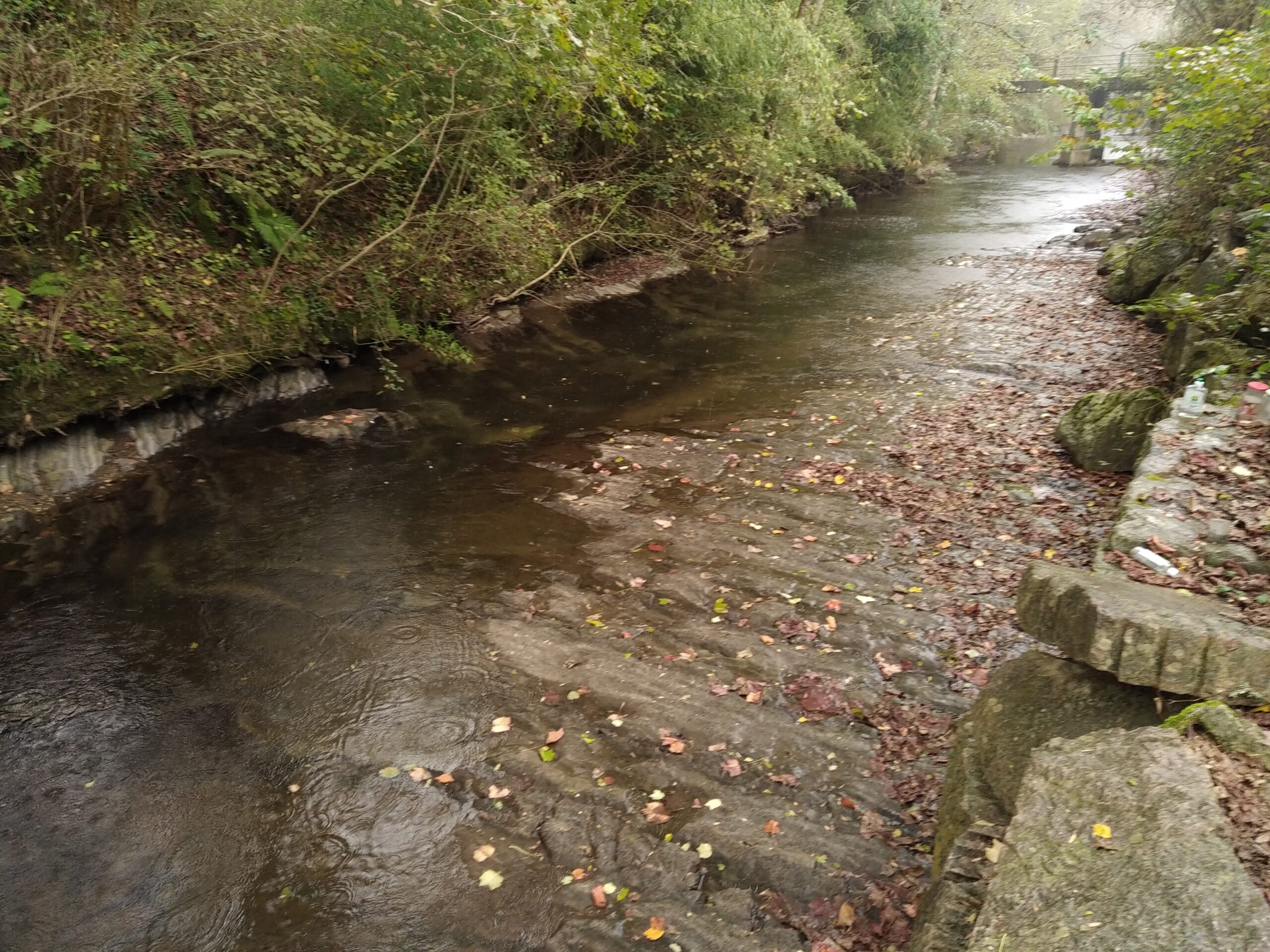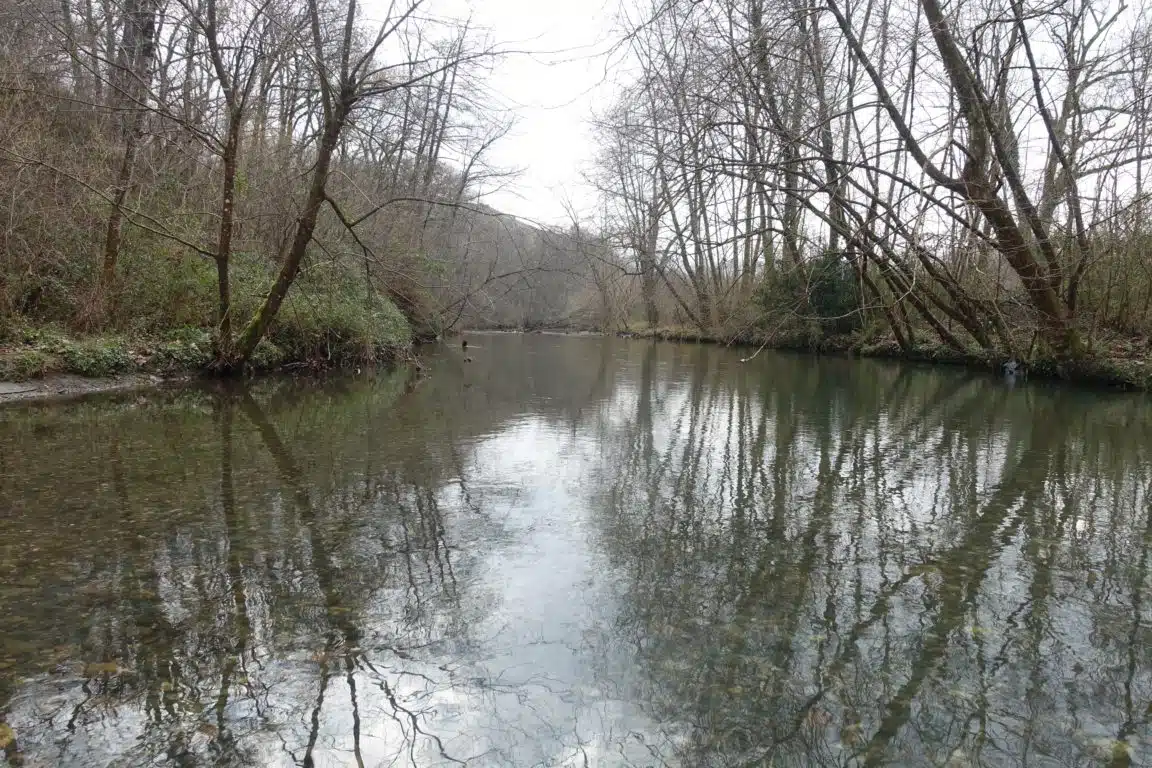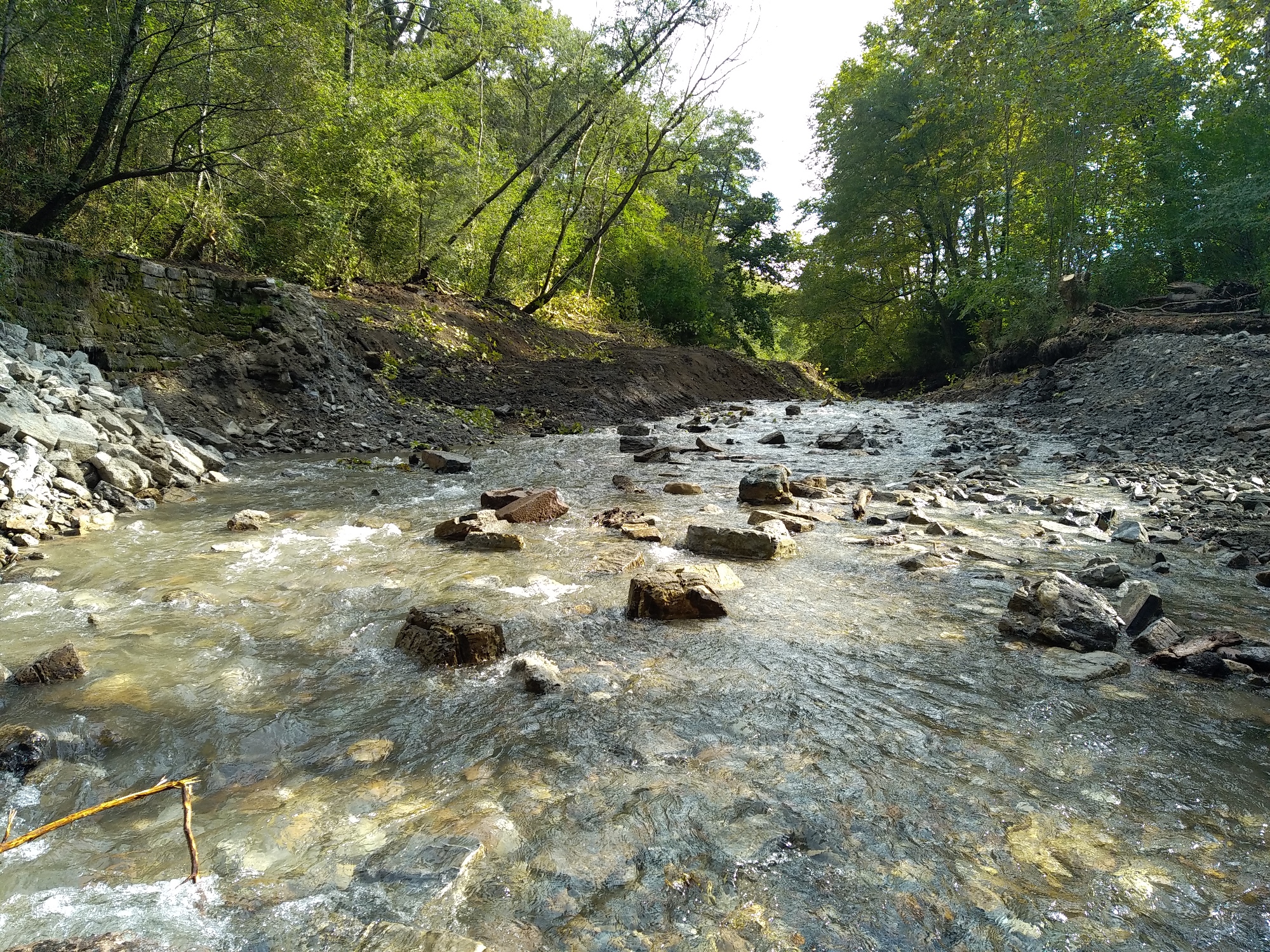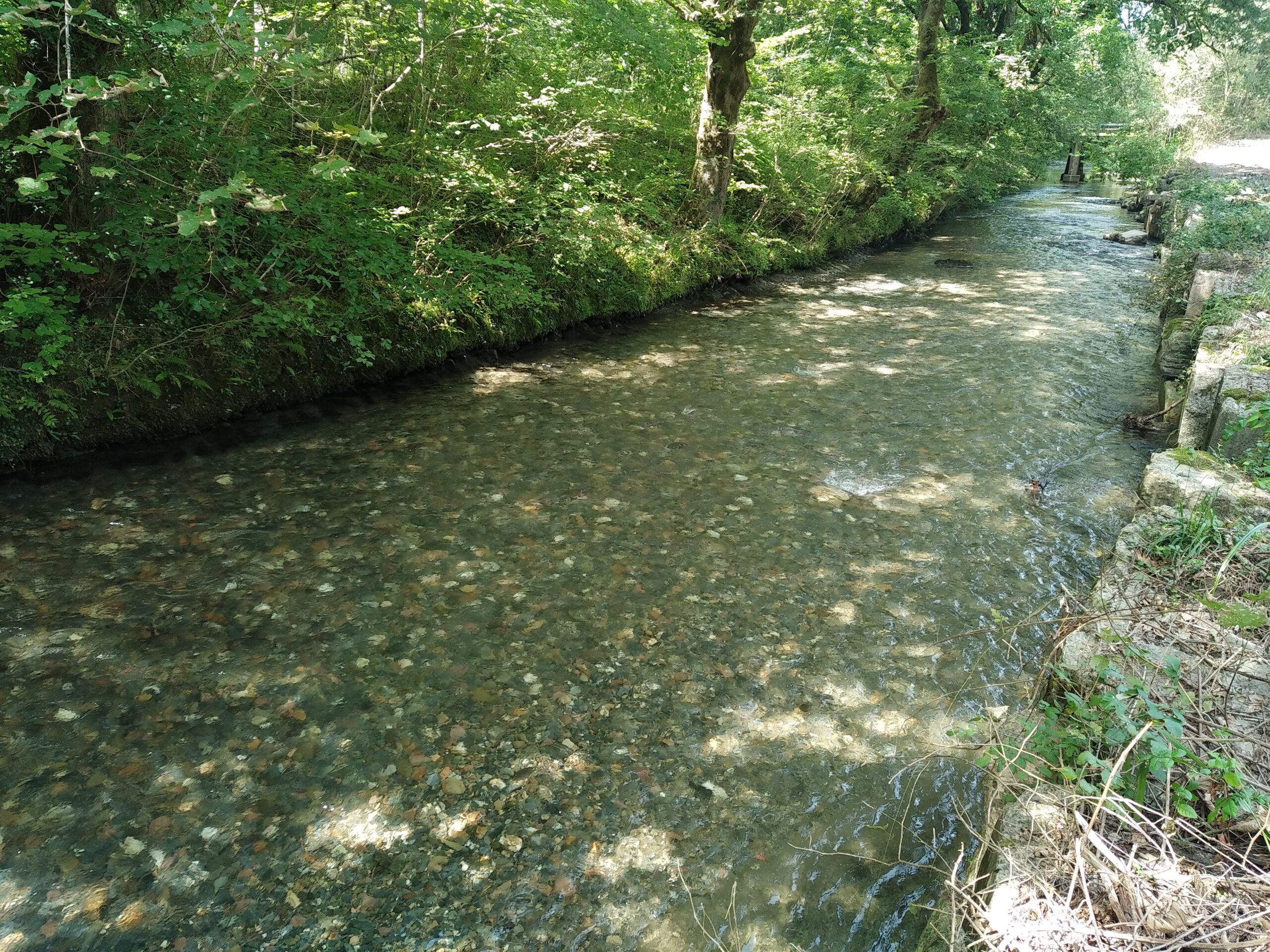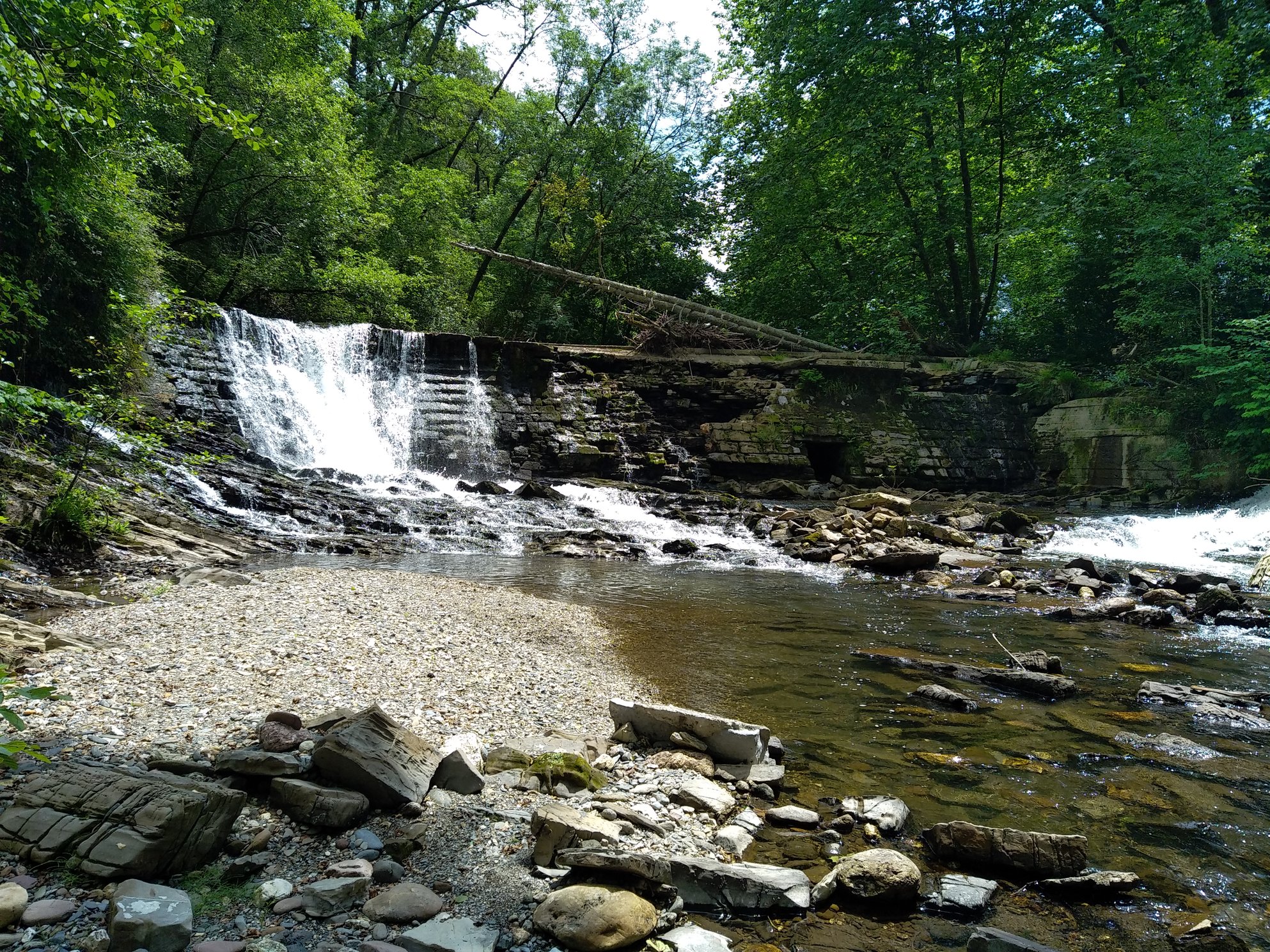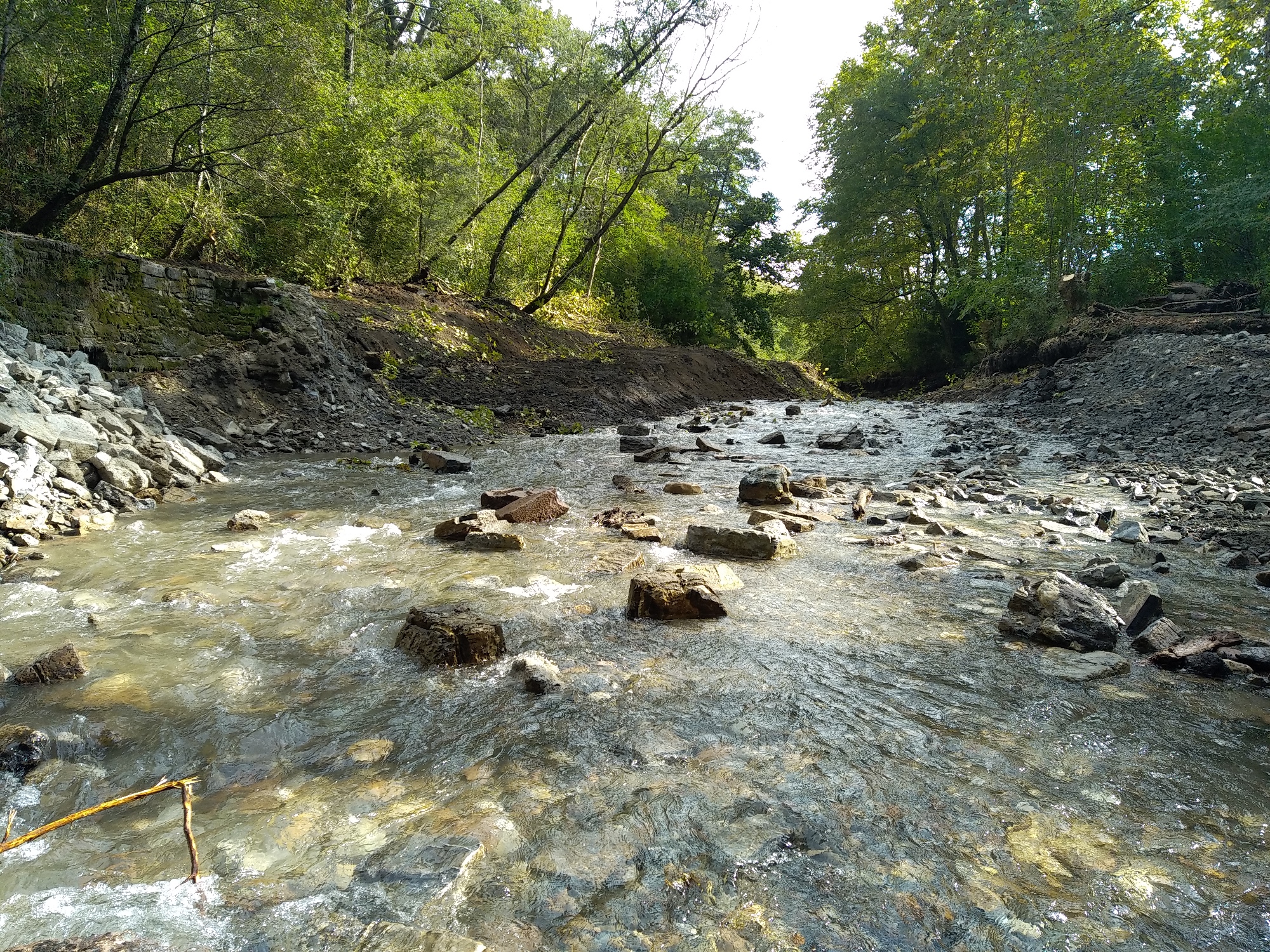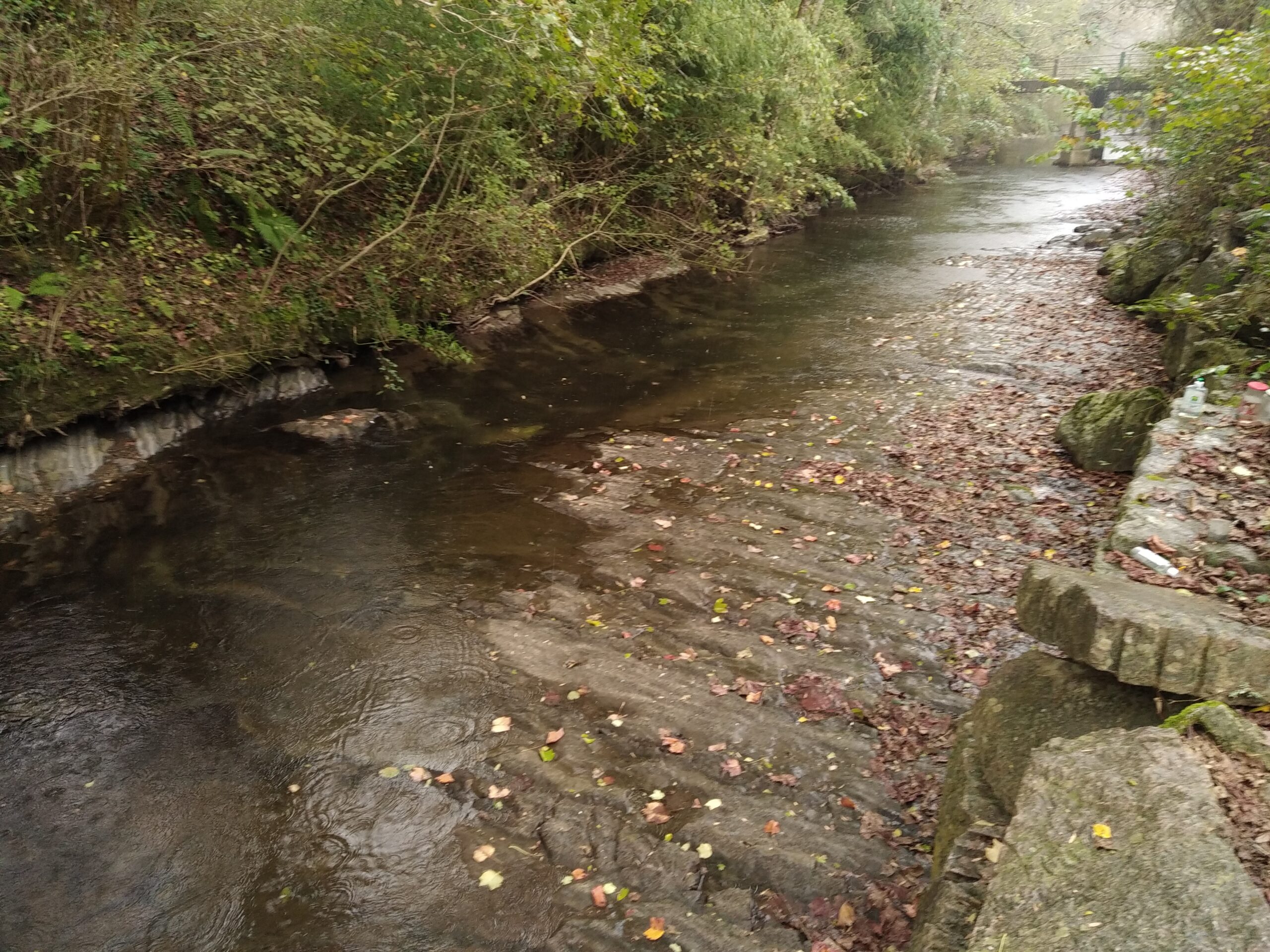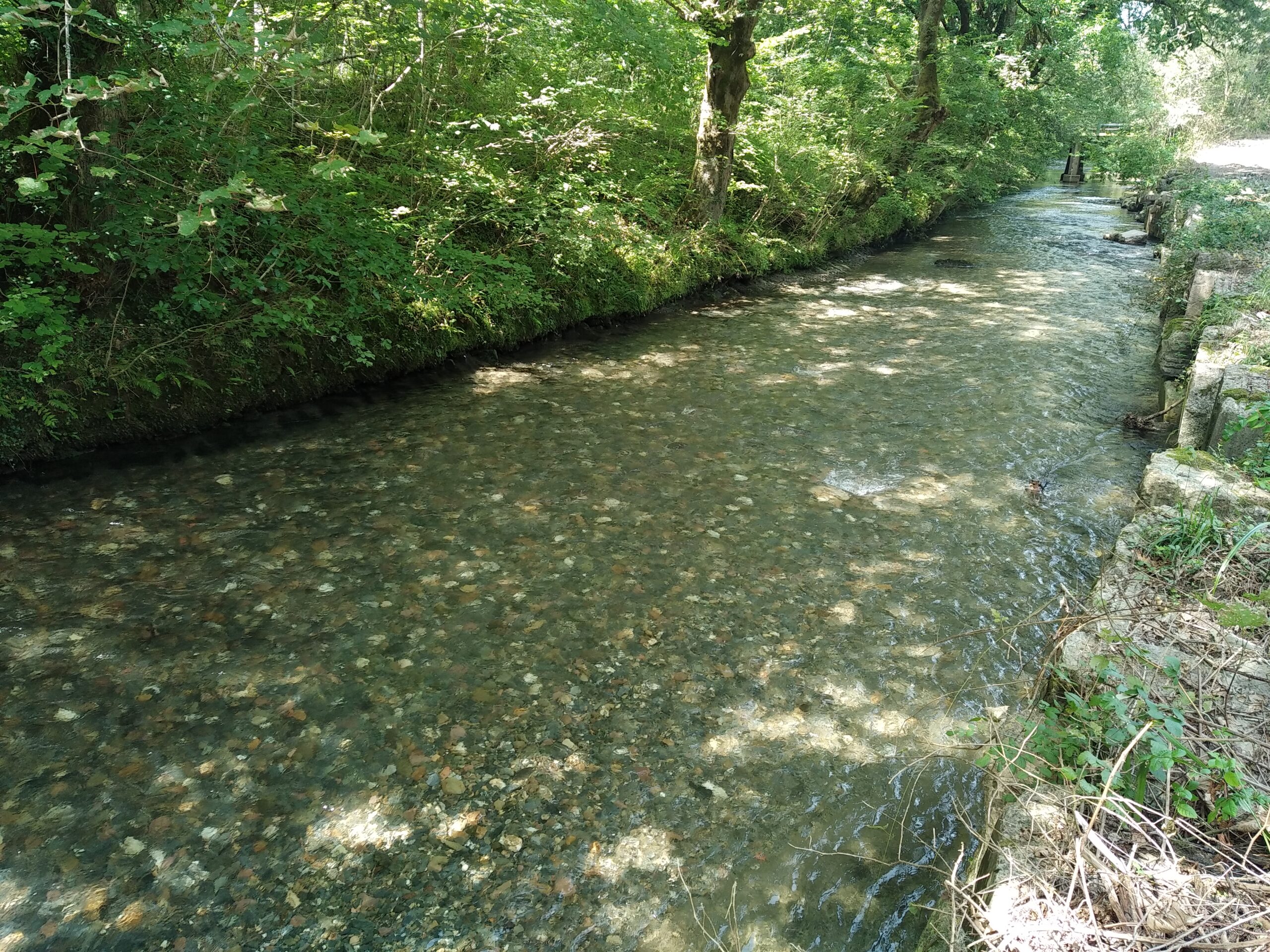Reconnecting the River Nivelle
The River Nivelle
The Nivelle is a small, cross-border coastal river that runs for 52 km and has a catchment area of 279 km2. It springs in Spain and crosses the boarder with France after 12 km, and eventually flows into the Bay of Biscay. The River Nivelle, classified as Natura 2000 (FR7200785) area, is home to numerous threatened species, including the Atlantic salmon (Salmo salar), the European eel (Anguilla anguilla), the Allis shad (Alosa alosa), the Twaite shad (Alosa fallax), three lamprey species, the freshwater pearl mussel (Margaritifera margaritifera), the endemic Pyrenean desman (Galemys pyrenaicus), the European otter (Lutra lutra) and the White-clawed crayfish (Austropotamobius pallipes). The Atlantic salmon population in particular is well monitored, since the River Nivelle is part of the European «Salmon Index Rivers» network. The River Nivelle used to be fragmented by 4 dams, associated with former mills. The largest of them was Urrutienea Dam and constituted an unsurpassable obstacle to all fish species. The other three barriers along the river are smaller and equipped with functioning fish passes and have minimum to none impact on fish migration.
